 Pamela Petro (Photo: Thomas Sayers Ellis)
Pamela Petro (Photo: Thomas Sayers Ellis)
Sometimes we meet people through the strangest of connections. Almost two years ago, a dear friend of mine introduced me to the poetry of John Weiners, a Boston College (high school and university) classmate of his. In researching this lesser-known but no-less-great Beat poet, I came across Pamela Petro’s article on Weiners, “The Hipster of Joy Street,” initially published in the Boston College magazine and reprinted in Jacket 2 soon after Weiners death in 2002. I was so moved by Petro’s writing, I sent her an email. She responded and we’ve been exchanging letters since.
Living in Northampton, Massachusetts, Petro is a writer and an artist, and prefers to be both simultaneously, but that doesn’t happen very often, she says.
She has written a handful of books including “Sitting Up with the Dead: A Storied Journey Through the American South” and “The Slow Breath of Stone: A Romanesque Love Story.” Central to her current work is the concept of hiraeth, a slightly untranslatable Welsh word that means longing or yearning, missing something or someone absent. At the moment, she is working on a memoir called “The Slant Space: A Memoir of Wales and the Presence of Absence,” a book about an idea, using the hiraeth of the foreigner—someone who loves Wales but can never really be Welsh—as the way into the subject.
On the artist side, Petro posted on her blog, The Petrograph Gallery, moved-camera images taken at dusk. The idea behind what she calls “The Dusk Series” is an effort to deconstruct conventional landscapes. And that makes sense as many of the images resemble the aurora borealis although technically the Latin word aurora means sunrise or the Roman goddess of dawn. From this work, she hopes to create a new word-and-image book (read simultaneously artist and writer) called Invisible Landscapes inspired by Calvino’s “Invisible Cities.” Here, Petro says she will investigate hiraeth as an ecological “keyword” as Raymond Williams used the term. She explains:
“I like the idea of “documenting” nature with an ostensibly objective tool like a camera to create, rather than recognizable landscapes, images in a state of spatial and temporal mutability. The dusk photos aren’t petrographs, but they investigate the same territory: the liminal spaces between seen and intuited, light and dark, day and night. Because they focus on transition instead of stability, they blur the boundaries between what we see and what we expect, hopefully making us reexamine our relationship to landscape and redefine what we call ecology.”
Earlier this year, Petro launched “AfterShadows: A Grand Canyon Narrative” at the Lesley Creative Writing Residency in Cambridge. This book came out of her Artist’s Residency at the Canyon in 2011. It looks at the hiraeth of deep time and geology, paired with the loss of both her father and her dog in 2012.
With a B.A. from Brown University (Independent Honors Concentration in Writing and Illustration) and a M.A. from the University of Wales, Petro teaches creative writing at Smith College and in Lesley University’s MFA in Creative Writing Program.
—JC Olsthoorn
/
JC Olsthoorn (JCO): In your book Sitting Up with the Dead one passage in particular struck me:
“A story’s only half the equation,” he said. “The context you tell it in makes all the difference, twists the meaning. Ignore the context and you’re being irresponsible…. The context,” reiterated Akbar Imhotep, . . . “is everything.”
How important is context for you?
Pamela Petro (PP): I’m in complete agreement with Akbar. The only reason Sitting up with the Dead works—assuming it does work!—is because the Southern storytellers whom I asked to tell me tales didn’t tell them in a vacuum. They told stories to me; I told stories about them. What they looked like, where we met, where they were from, what they did for a living, what generation they belonged to. All of this mattered immensely. It mattered that Orville Hicks told me a centuries-old Jack tale, out of medieval England, at the Blowing Rock Recycling Center, where he holds court, and that Kwame Dawes told me an equally ancient African tale, The Girl and the Fish, in his office at the University of South Carolina.
I find context probably the most important part of any attempt at communication. In fact, I do a warm-up exercise with my writing students where I give them a premise—say, a couple about to kiss—and then flash up different contextual images, from a beach to a bedroom to an office to a gallows. Context tells more than half the story, often contradicting expectations.
JCO: That makes a lot of sense for storytelling. What about with art? Todd Bartel in the comments section of a NC interview addressed a question of context for viewers and an artist’s intentions saying:
“Because I am all too keenly aware that people, myself included, bring whatever they experience with them when looking at art, or experiencing any creative expression for that matter, I tend to select things that have several meanings, that can become springs boards for more than one lineage of thought, association or feeling. … I spend a lot of time looking for things before I ever set out to make something. I search for objects/images that have specific meaning for me on the one hand and general references to larger topics on the other hand. I look for things that can spark double meanings. That way, I am assured of at least a couple of readings I intend, while also allowing for others, I cannot yet imagine.”
PP: Yes, I utterly agree with Bartel that the finest works—words, images, performances, you name it—are those which spark the most multifaceted meanings. In fact, that’s why I’m so drawn to the concept of hiraeth. It is a distinctly Welsh idea, deriving from the historical, linguistic, economic, religious, and cultural experience of Wales. But it truly is, also, a universal experience, and the most useful, memorable ideas are both specific and universal at once.
JCO: What is hiraeth and is a Welsh context important to understand it?
PP: Hiraeth refers to the “presence of absence.” Call it a yearning for something or someone irretrievable, beyond place or time, lost to the wars we can never win: the ones against time, mortality, and injustice. It is what we seek in the past, yearn for in the future, and invent in the present to placate our absences. As to whether a Welsh context is important in understanding it: Yes and no.
As Robin Chapman, a British linguist, says about hiraeth, “…it denotes, paradoxically, both an enduring human feeling and something essentially Welsh.” So it depends on which side of that paradox concerns you. The moment a Welsh person starts to describe hiraeth, the rest of us invariably say, “Oh! Yes! I know what you mean! Is that what it’s called?” So you can say No, a Welsh context isn’t important—it is a universal human experience.
On the other hand, we can’t neglect to ask why Wales and its language made room for this word when all but one other of the world’s 7000+ languages—Portuguese, with its lovely word, saudade—didn’t. So, a knowledge of Wales is indeed critical in understanding hiraeth; or, to put it another way, a knowledge of hiraeth is critical in understanding Wales. But that’s just the first step: it opens up to encompass all human experience.
JCO: It is no accident you hear so many of the Portuguese Fado singers singing about saudade. The word itself is peppered in many of the mournful fado songs.
Saudades de Coimbra | José Afonso ao vivo no Coliseu
Your installation from late 2013 using gravestone carvings is related to your work with petrographs—silver gelatin photographs printed on stone, especially, but also on other natural detritus like leaves, logs, and bark, as well as concrete sidewalks and, in this case, glass windows. It seems that the marks we make on stone, from scratches to engravings to petrographs, are a part of our primordial humanity. You mention on your website that “petrographs exist in the gap between human consciousness and the world around us”. It almost sounds like that is where hiraeth resides.
PP: I’d long been wanting to work with old 18th century New England gravestone carvings—not to mention the hiraeth inherent in cemeteries. That longing turned into the interactive installation you just mentioned, Hiraeth in Northampton: An Exploration of Longing, from which I derived the “graphic script” I’m working on right now called Under Paradise Valley: A Play for Epitaphs.
On my website there’s an explanation of the project, including a video in which I describe it all, how I derived the graphic script, the images are of the cover, and the cast of characters.
Video of the installation Hiraeth in Northampton: An Exploration of Longing with Pamela Petro explaining its context.
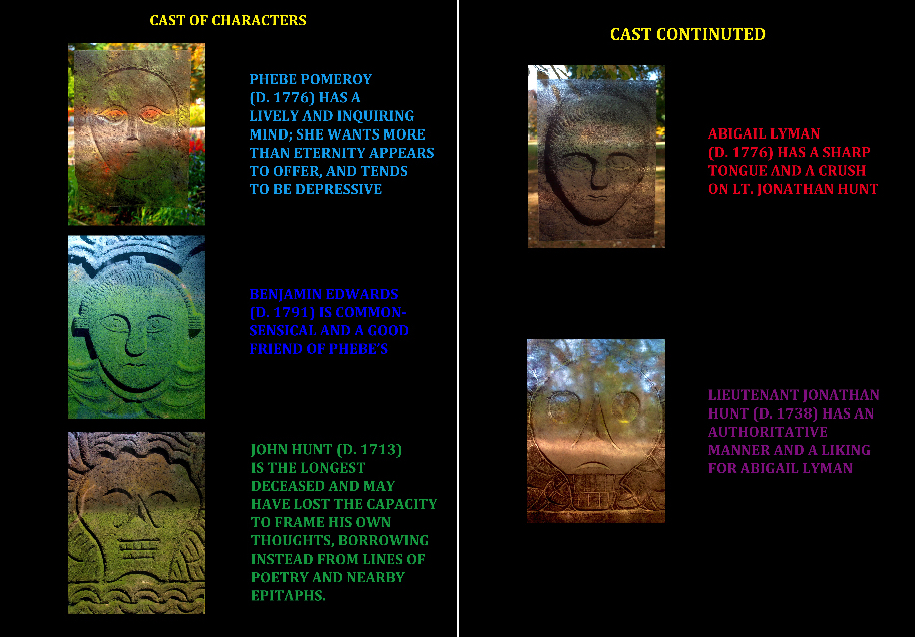 List of the cast of characters in Petro’s upcoming “graphic script”
List of the cast of characters in Petro’s upcoming “graphic script”
entitled Under Paradise Valley: A Play for Epitaphs
JCO: Having the context of Hiraeth in Northampton: An Exploration of Longing, especially watching the video, helped me better understand what it is you want to do in Under Paradise Valley. Both of them give different, nuanced meanings to hiraeth. You seem to be making personal (for the people involved in the installation) connections between very disconnected things, 18th century gravestone carvings, 21st century living beings, words new and old, and the mix of technology, photography, print, old windows and glass, bringing them all together, using disparate pieces to create a narrative.
PP: The idea is simple enough, in some ways. You know the feeling you get when you walk through very old cemeteries? A kind of frustration that you can’t ever know these people, even though testaments to their lives are right there before you. Truly, a “long field” separates you and your time from them and their time. In old Welsh hiraeth actually means “long field”.
So, I wanted to find a way to connect with them—and that’s the brilliance of hiraeth. Longing for the impossible inspires creative connections rather than simply despair. It’s why, I think, Wales is such a creative place, full of tales and poetry and music and art.
The windows I used in the installation made an ideal metaphor for peering across time. And by virtually “wearing” the gravestone images and borrowing their owner’s epitaphs, we—the contemporary NoHo’ers—added our choices to theirs. It’s a way of communicating across the centuries. All I did was string the images and captions together into a kind of “found” surrealistic narrative.
JCO: You write in the Introduction to Under Paradise Valley that you forced yourself to work within a strict set of limitations in creating the “found” text of the graphic script from the interactive component of the installation. What did those limitations entail, and did you entertain easing the limitations at any point? Or did you feel bound by them?
PP: I loved working within the strict set of limitations—it was like a playful puzzle, stringing those captions together. Because I asked viewers at the installation to have their photos taken through the windows of their choice, with the captions of their choice, I wanted to honor their selections. So for the graphic script, I assigned the characters represented by each window ONLY lines taken from the texts that viewers chose for their windows. For instance, if four viewers selected the phrase “I go cheerfully”—one of the epitaph excerpts—and chose to stand behind Phebe Pomeroy’s window holding that caption, Phebe has to utter the phrase “I go cheerfully” four times in the script.
I had so much fun working this way! And I also felt less pressure than I normally do when I write, I think because it felt so wonderfully collaborative: I was working with the words of 18th century epitaph writers (mostly) and the choices of the gallery-goers. It felt like we were assembling a puzzle together. I’d love to do it again.
As I strung the words together, a bizarre and funny story emerged: One of the dead, Phebe Pomeroy, is bored by eternity and wants to kill herself, which her friends try to explain is impossible as she’s already dead. But then a graffiti artist comes along and changes the name on her gravestone to Pheben, and she decides to spend the rest of eternity as a male. Chaos ensues, along with a same-sex relationship. Very Northampton, very funny, and yet poignant at the same time.
JCO: What context, then, needs to exist in these word-and-image pairings, or are they self-contextual, the words and the images, separately? Together?
PP: I’d hazard a rash statement that most word and image pairings—if they’re successful—are self-contextualizing. I don’t need to know more about Alison Bechdel or her family to understand her superb graphic novel, Fun Home. But no blanket statement covers everything.
It’s definitely richer to know the background in the particular case of Under Paradise Valley than to read the script cold; but then, I provide background information in an Introduction, so hopefully that provides the context.
It matters to me that the death’s heads and soul effigies in the 18th century gravestone carvings derive from Puritan religious imagery; but you don’t need to know that for the exhibition or graphic script to carry a wallop. A young man I just met associated them with contemporary video games, yet still understood that we overcome a “long field”—the gap implied by hiraeth—between what the images represent and our own experience when we marry those images and our choices of captions. He understood that, coming from a completely different perspective. That made me very happy.
JCO: When are you planning to release Under Paradise Valley and what form will it take?
PP: I don’t have a release date yet. I’ve just put together a template, and now have to decide if I want to keep it local—and look for a Northampton publisher—or if it can transcend it’s setting and make sense beyond a local context. There you go—context again! It always matters. Dylan Thomas wrote “Under Milk Wood” about a small town in Wales, yet when we hear it in North America, it makes sense to us and we picture our own communities. Hopefully that will be the case for Under Paradise Valley as well.
JCO: I was wondering about the relationship of our North American concept of nostalgia to hiraeth? We yearn for “back when…” or “in the old days…” or “when I was young(er)…” clearly something we cannot have. Does the cultural context differentiate hiraeth and nostalgia?
PP: North American hiraeth and nostalgia form a real web, hard to tease apart. When I was discussing this once, someone said, “Well, hiraeth is really creative nostalgia, right?” He was on to something. We all look back at what we’ve left behind—childhood, old timey holidays that we miss, people we miss, simpler lives. I think of that as nostalgia. It becomes hiraeth when there’s an element of imagination added—or that’s how I see it, anyway.
The grandfather of a friend grew up in Italy and came to the States. He spent years telling stories about his village outside of Naples. Stories that mutated and changed over the years—became more about his longing than the place itself—but were nonetheless true for him. The Italy his family came to know is a make-believe place, not just because of his errant memory and heart, but because it’s utterly changed—his village is a suburb of Naples now. Yet his Italy is the one my friend and her family still long to visit.
There’s always an element of the self—a collaboration of memory and desire that makes something new—in hiraeth that makes it more creative than simple nostalgia.
We mutts of the Americas ALL experience it—longing for places we can’t go to and can never know—yet we don’t have a word for it in English.
—JC Olsthoorn & Pamela Petro
Pamela Petro is an artist and writer based in Northampton, Massachusetts. She has written three books of place-based creative nonfiction—about traveling around the world to learn Welsh, storytellers in the American South, and the relationship between geology, stonecarving, and photography in Southwest France—and she also teaches creative writing at Smith College and on Lesley University’s MFA in Creative Writing Program. Her artwork derives from environmental installations of petrographs, and has been shown throughout New England and at the Grand Canyon, where she was an Artist in Residency in 2011. Pamela’s latest artwork is the artist book AfterShadows: A Grand Canyon Narrative, which was launched in January 2015.
§
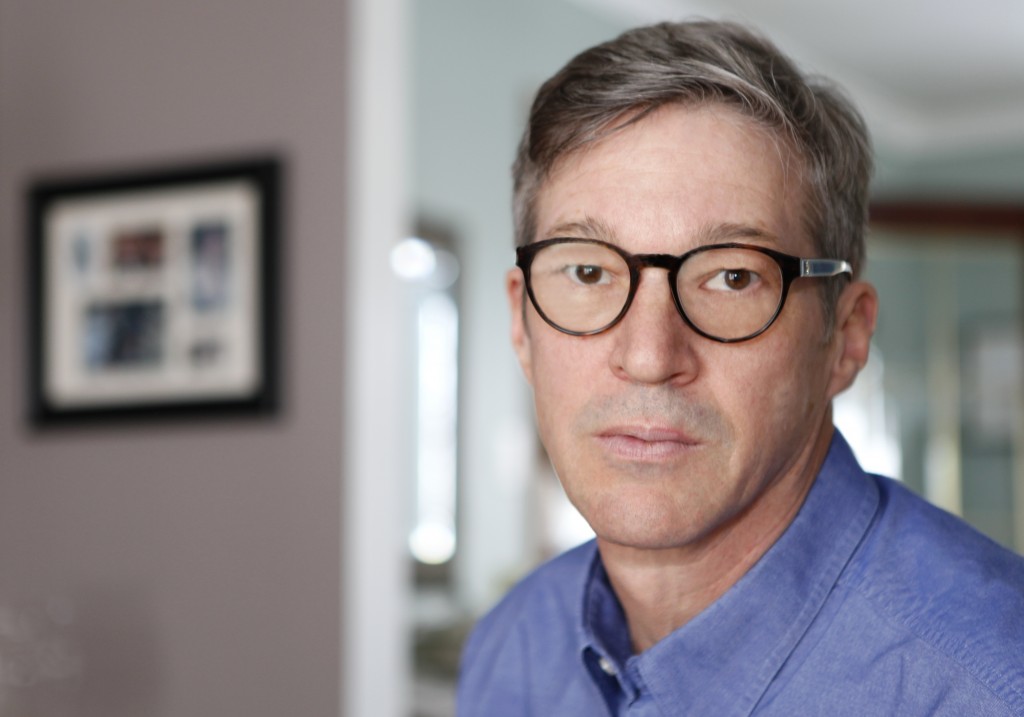 JC Olsthoorn (Photo: Lois Siegel)
JC Olsthoorn (Photo: Lois Siegel)
JC Olsthoorn spends time at the Domaine Marée Estate near Otter Lake, Quebec, writing raw poetry, creating coarse art, and cooking scratch food. His poems have been published in a chapbook, “as hush as us” and have appeared in literary magazines. JC’s artwork has been exhibited and has appeared in several publications. He is a curator at the Arbor Gallery – Centre for Contemporary Art in Vankleek Hill, Ontario.
/
/
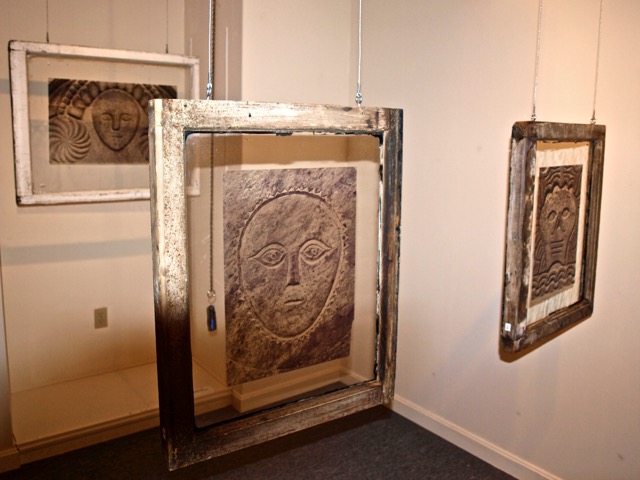
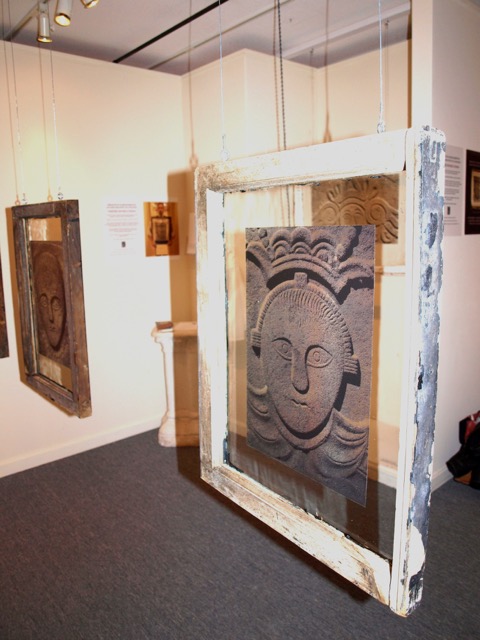

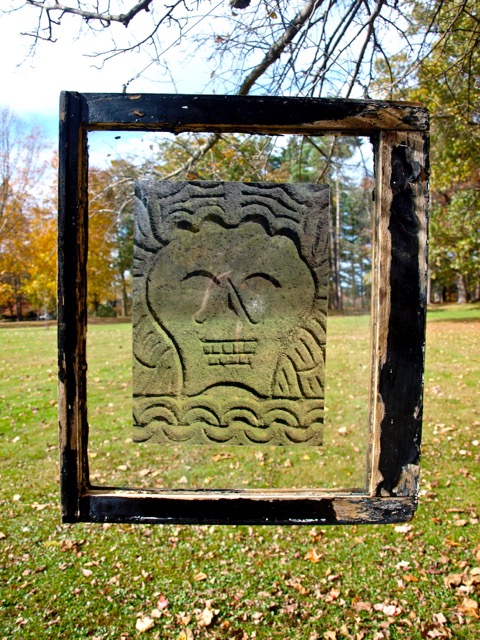
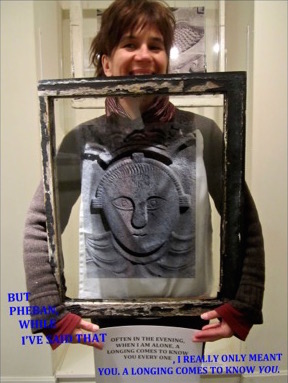
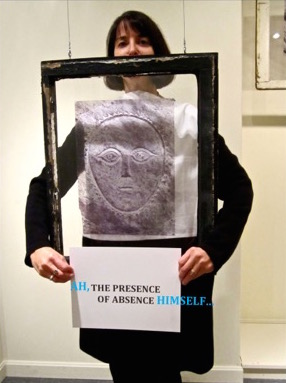

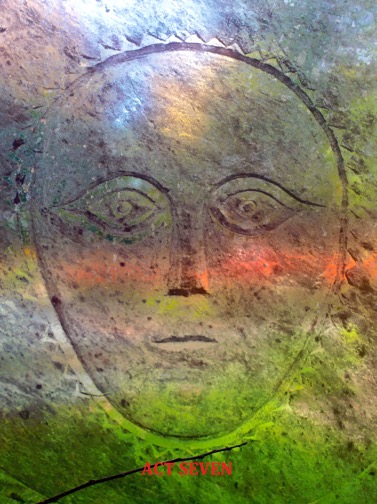
This idea of “hiraeth” is fascinating – especially as “creative nostalgia.” Thanks to both Pamela Petro and JC Olsthoorn for the interview.